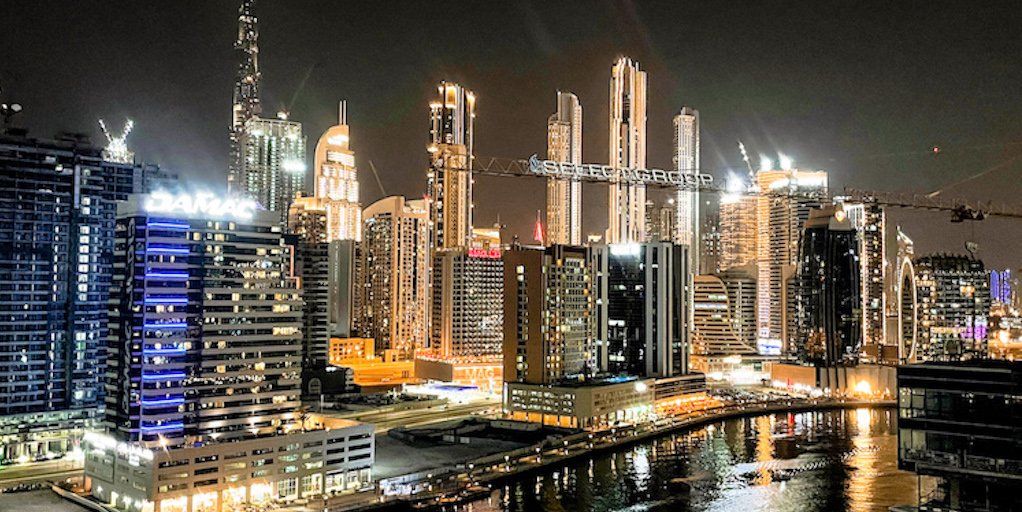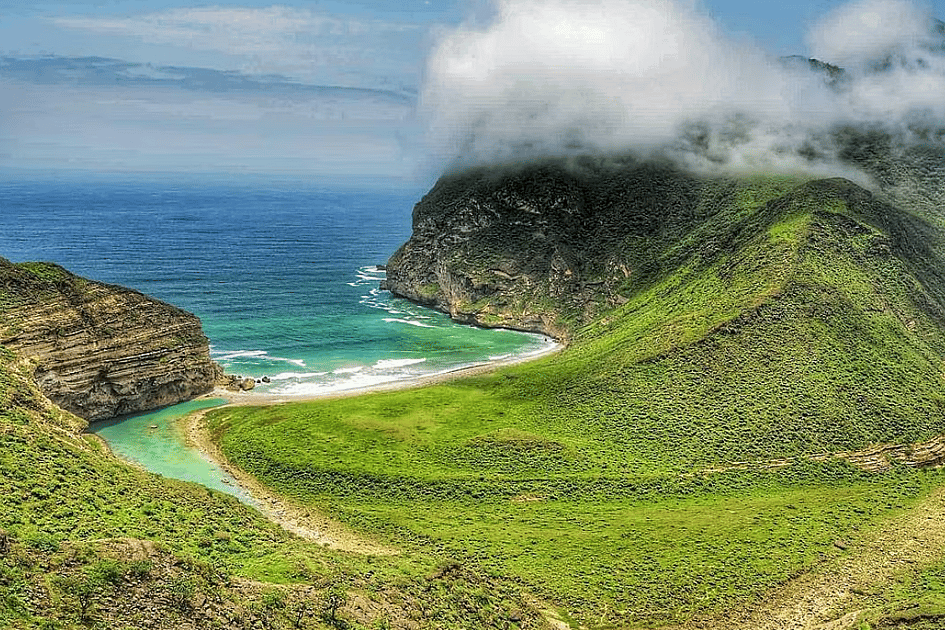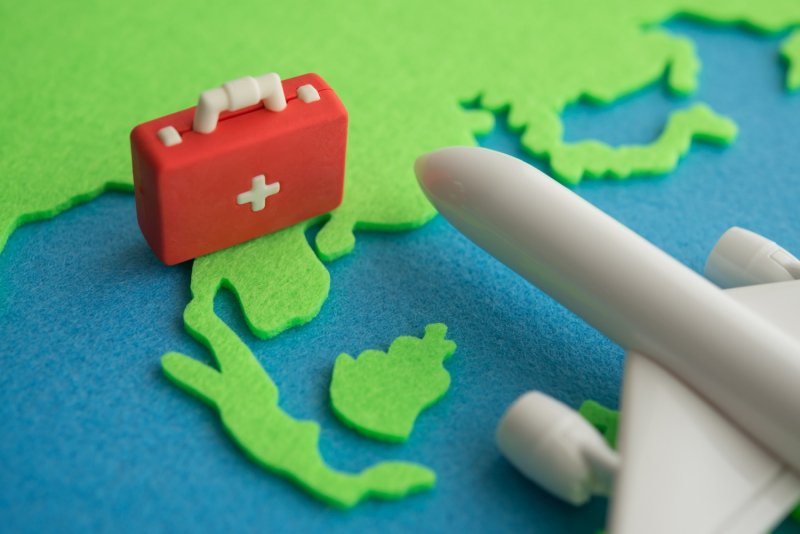Tips & Advices
Is Dubai Safe? Essential Travel Safety Tips for Visitors

The emirate’s strict laws make Dubai almost crime-free, but there are other safety concerns.
Photo © Alicia Erickson
Dubai is a remarkably international city with one of the lowest crime rates in the world. Petty incidents such as pickpocketing are rare and violent crimes are more or less non-existent. On a recent visit, I never felt uneasy in crowded places or when I was out at night and traveled without worry for my personal safety or my belongings. Personal safety in Dubai is largely attributed to strict laws and a general obedience to the rigorous government.
While Dubai is, in general, less strict than the other Emirates, still be wary of a few sensitive topics, from alcohol laws to LGBTQ+ laws. And despite Dubai’s reputation as a safe and crime-free place for travelers, there are still some factors to consider when visiting both the city and the emirate of Dubai, including precautions when it comes extreme heat and desert excursions.
Women’s safety
Generally, Dubai is a very safe destination for women travelers, solo or in a group. English is widely spoken, public transportation is abundant, and there are free WiFi zones located across the city. Personal safety in Dubai is among the highest in the world, with 98.5% of women saying they felt safe walking alone in their neighborhoods at night in the UAE in the 2021 Women, Peace and Security Index’s community safety survey.
Women’s safety is partly a result of the strict local culture. That being said, I did have a number of unwelcome encounters in bars and clubs in Dubai and Abu Dhabi when I was followed around and harassed. I never experienced anything like this on the streets, though.
When it comes to clothes, Dubai is less strict than other emirates, such as more traditional Sharjah, the third largest emirate, where it is advisable to dress conservatively. Due to the large number of Europeans in Dubai, it is relatively acceptable to wear shorts or a short dress in the more westernized establishments. The time of the year when you should be particularly careful about what you dress, however, is during the month of Ramadan, when observances of the Islamic holiday are in place. While this doesn’t require foreign women to cover their heads, it is recommended to dress more modestly, such as wearing pants, a long dress, and modest shirts.
LGBTQ+ safety
Although Dubai has a cosmopolitan front with its flashy hotels and upscale restaurants, that doesn’t mean it is progressive in every way. The United Arab Emirates has some of the strictest laws surrounding LGBTQ+ rights and Dubai is no exception. Every type of same-sex act is illegal and punishable by severe measures, including fines, deportation, and imprisonment. While the most extreme consequences are typically applicable to Muslims, it is important to be aware of these laws and be cautious about not engaging in same-sex public displays of affection. This rule applies for heterosexual couples as well, for that matter, as all public displays of affection – including holding hands – is illegal and should be avoided.
Avoiding heat stroke
Heat is a significant consideration when visiting Dubai. During a large part of the year, temperatures climb to more than 100°F (40°C). June through September are the hottest months, with the peak heat hitting in August. You’ll need to to come prepared for these temperatures if you plan to be outside. Much of the city’s population spends its time inside air-conditioned restaurants and malls during these months to avoid the heat. If you plan to go outside, wear lightweight clothing and stay hydrated. You’ll want to think carefully before planning any outdoor adventures during these hot months. Luckily, there is no shortage of swimming pools at hotels throughout Dubai if you’re hoping to get some sun while staying cool.
While there’s a belief that Dubai is excessively hot year-round, this desert city does experience a few months’ reprieve. November through February have cooler, more pleasant temperatures. January is the coolest month with highs in the mid-70s (low-20s C) and lows in the low-mid 60s (15-18°C). These months are ideal for hiking, camping, and other outdoor excursions.
Desert safety in Dubai
Accessing the desert on your own as a first-time visitor is not recommended unless you’re an experienced outdoor adventurer. There are plenty of types of four-wheel drive desert safaris you can book with a local guide, or you can choose to pay a visit to the Dubai Desert Conservation Reserve.
The desert can reach even more extreme temperatures than the city, so it’s important to pack appropriately. Wear lightweight, loose-fitting clothing that keeps you covered from the sun. Use sunscreen and bring sufficient water. If you do choose to embark on a solo desert excursion, know that you’ll be in wide swaths of sand with minimal to no infrastructure and intermittent phone service. Always bring more than enough water and food, hydration tablets, a spare tire, and appropriate camping gear if you’re staying overnight. While there are no large predators in the Dubai desert, be aware of venomous critters such as vipers, scorpions, and spider species endemic on the Arabian Peninsula.
Driving in Dubai
One of the most exciting parts about exploring a new place is the freedom to drive through unknown territory. Non-residents can drive in Dubai with an international driver’s license and you can rent a car if you are over 21.
Dubai is a very busy city with massive highways that can be daunting at first. Maneuvering the multi-lane highways is initially intimidating, there are helpful traffic signs in both Arabic and English. The left lane is the fastest and should be avoided if you’re not comfortable contending with aggressive drivers. Be aware of speed limits and traffic rules to avoid traffic fines.
While there is a certain thrill to off-roading on sand dunes, ensure that if you head off for a sand bashing adventure, you’re equipped with spare tires and a car with four-wheel drive.
Tips & Advices
Khareef season: Omani authorities issue safety tips for travelling to Dhofar after crash

In the midst of Salalah’s Khareef season, many UAE residents drive to Oman to experience the lush green landscape as the monsoon rain touches the land.
While the rains bring cooler temperatures and helps create unforgettable moments, it can also bring about safety hazards, particularly near water bodies. Stressing the need to exercise caution, Omani police shared safety tips for those travelling to Dhofar:
Stay up to date with the latest news. Follow KT on WhatsApp Channels.
-
Do not park your vehicle in unsafe places, such as near slopes. This puts your life and the lives of others at risk. Be responsible and stay away from dangerous locations.
-
Never leave children unattended near ponds and bodies of water, as even a moment of inattention can cost you
-
Keep the vehicles clean, and avoid dirty cars. Do not obscure the plate number, as owners can be held legally accountable for this
-
Passengers must not lean out of the window or roof of the car while driving recklessly; this can also expose you to legal accountability.
In a tragic accident in early July, a multi-vehicle collision in Dhofar killed 5 people, including two Omanis and three Emiratis who were from the same family. The crash injured eleven others, including two Omanis and nine Emirati citizens of which five are children.
The Emirati family members who died in the crash are a couple, and the wife’s mother. The couple’s eight-month-old daughter was hospitalised in Oman.
The family had travelled to Salalah for a summer break, but the tragic accident occurred just 12 hours after they left the UAE.
After the collision, UAE travellers spoke to Khaleej Times, sharing precautions to take while planning the journey, such as ensuring the vehicle is in good condition.
They also shared safety advice for driving through the tricky terrain, such as checking fuel levels, and driving at a speed lower than the speed limit in some areas.
Tips & Advices
US Issues Urgent Level 2 Travel Advisory for Dominican Republic Highlighting Crime Risks and Essential Safety Tips for Travelers

Sunday, July 20, 2025
The U.S. Department of State has recently updated its travel advisory for the Dominican Republic, now categorized as a Level 2 destination, advising American travelers to “exercise increased caution” due to the persistent threat of crime. This update follows concerns about violent crime, including robbery, homicide, and sexual assault, in popular tourist areas. However, while some critics have dismissed the warnings, the Dominican Republic continues to attract millions of international visitors each year. Here’s an overview of what travelers should know about the advisory, safety tips, and why this Caribbean gem remains a top vacation destination.
U.S. Travel Advisory Update for the Dominican Republic
On June 12, 2025, the U.S. Department of State elevated its advisory for the Dominican Republic to Level 2, urging travelers to “exercise increased caution.” This warning highlights the risk of violent crime despite the heightened police presence in areas frequently visited by tourists. The advisory pointed out that both locals and tourists may be vulnerable to robbery, sexual assault, and homicide, with criminals often escaping prosecution. However, the Level 2 advisory is considered a moderate alert, advising travelers to be aware of increased risks, but not urging a halt to travel entirely.
Level 2 advisories are a common designation for many tourist destinations around the world, and the Dominican Republic shares this rating with other popular travel spots such as Panama, the Netherlands, and the Philippines.
The Canadian government has also issued a similar advisory, cautioning travelers to “exercise a high degree of caution” due to concerns about violent and petty crime, including fraud, poor road conditions, and issues with public transportation. Despite these risks, the country remains a top destination for North American tourists.
How to Stay Safe in the Dominican Republic
While the U.S. travel advisory highlights the risks present in the Dominican Republic, travelers can take several precautionary steps to ensure a safe and enjoyable trip. The U.S. Department of State has provided key safety recommendations, including:
- Stay Vigilant: Always be aware of your surroundings, especially in crowded or unfamiliar areas.
- Avoid Flashy Displays: Keep valuables like phones, jewelry, and expensive items out of sight.
- Travel in Groups: If possible, explore with others rather than traveling alone, especially in unfamiliar areas.
- Secure Your Belongings: Never leave your food, drinks, or personal items unattended, and always be cautious in public spaces.
- Use Trusted Transportation: Experts recommend using reputable taxi services or ride-sharing apps like Uber instead of unregistered motorcycle taxis (motoconchos).
For emergencies, the Dominican Republic provides reliable services including the 911 emergency response system and a tourist police force (POLITUR), ensuring that help is available when needed. Many resorts also offer private security personnel, and it is strongly advised to stay within the safety of the resort boundaries, particularly for first-time visitors.
Cultural Awareness and Preparation
To ensure smooth travel experiences, it is recommended that visitors familiarize themselves with the local culture, norms, and language. Knowing basic Spanish phrases and understanding the country’s political sensitivities—such as its complex relationship with neighboring Haiti—can enhance both safety and comfort during a stay. Additionally, being respectful of local customs and traditions can help avoid misunderstandings and ensure a more enriching trip.
Why the Dominican Republic Remains the Caribbean’s Top Destination
Despite the recent advisory update, the Dominican Republic continues to be the Caribbean’s most visited country. In 2024, the island saw 34.2 million international arrivals, marking a 6.1% increase from the previous year. American tourists represent a significant portion of this traffic, accounting for nearly half of the arrivals during the first half of 2024.
However, there has been a slight decline in North American visitors in 2025, with a 5.12% drop in American arrivals and a 4.43% decrease in Canadian travelers compared to the same period in 2024. The Ministry of Tourism attributes these declines to seasonal factors such as the leap year and changes in holiday scheduling. On a positive note, South American tourism has surged, with a 31.3% growth in arrivals from that region during the first quarter of 2025.
The Dominican Republic remains a beloved destination thanks to its white-sand beaches, vibrant culture, warm climate, and relatively low-cost travel options. The country’s straightforward entry requirements, including minimal visa processes for most travelers, also contribute to its popularity.
Conclusion
While the U.S. Level 2 advisory highlights valid safety concerns, the Dominican Republic continues to be a top choice for millions of travelers. With proper precautions, visitors can still experience the beauty and charm of this Caribbean paradise. The country’s world-class resorts and tourist destinations are well-equipped to ensure safety, making it a top contender for those seeking a tropical getaway.
Whether you’re attracted to the pristine beaches, the rich cultural heritage, or the affordable vacation options, the Dominican Republic remains a dream destination for travelers worldwide. By staying informed and following safety tips, tourists can continue to enjoy all the beauty the island has to offer while minimizing risks.
Tips & Advices
You really should get health insurance when travelling abroad – BusinessDesk | NZ
-

 Mergers & Acquisitions1 week ago
Mergers & Acquisitions1 week agoHow Elon Musk’s rogue Grok chatbot became a cautionary AI tale
-

 Mergers & Acquisitions1 week ago
Mergers & Acquisitions1 week agoAmazon weighs further investment in Anthropic to deepen AI alliance
-

 Asia Travel Pulse2 weeks ago
Asia Travel Pulse2 weeks agoLooking For Adventure In Asia? Here Are 7 Epic Destinations You Need To Experience At Least Once – Zee News
-

 Brand Stories2 weeks ago
Brand Stories2 weeks agoVoice AI Startup ElevenLabs Plans to Add Hubs Around the World
-

 Mergers & Acquisitions1 week ago
Mergers & Acquisitions1 week agoUK crime agency arrests 4 people over cyber attacks on retailers
-

 AI in Travel2 weeks ago
AI in Travel2 weeks ago‘Will AI take my job?’ A trip to a Beijing fortune-telling bar to see what lies ahead | China
-

 Mergers & Acquisitions1 week ago
Mergers & Acquisitions1 week agoEU pushes ahead with AI code of practice
-

 Mergers & Acquisitions2 weeks ago
Mergers & Acquisitions2 weeks agoChatGPT — the last of the great romantics
-

 The Travel Revolution of Our Era1 month ago
The Travel Revolution of Our Era1 month agoCheQin.ai Redefines Hotel Booking with Zero-Commission Model
-

 Mergers & Acquisitions1 week ago
Mergers & Acquisitions1 week agoHumans must remain at the heart of the AI story

